In this digital age, bridging language barriers has never been more essential, and AI translation software is revolutionizing the way we communicate across cultures. Whether you’re a digital marketer looking to expand your audience, a content creator aiming for global reach, or a language learner seeking to enhance your skills, the right AI tools can make all the difference. This post explores the best AI translation software available, outlining their benefits and guiding you on how to select the perfect tool for your needs.
Table of Contents
Why AI Translation Software is a Game Changer
The advantages of using AI translation software extend far beyond mere convenience. These tools offer a level of accuracy and speed that was previously unattainable. They help businesses reach new markets and connect with people in their own languages, building stronger relationships and increasing engagement. For content creators, AI translation tools simplify the process of adapting content for different regions, ensuring that your message resonates regardless of the language spoken. These tools are also very helpful for language learners, giving instant translations and helping them understand language details in context.
Choosing the Right AI Translation Tool
Selecting the appropriate AI translation tool depends on several factors, including the specific needs of your project, the languages involved, and the tool’s features. Start by identifying the languages you need to translate and assess the tool’s capability in handling those languages accurately. Consider the tool’s ease of use, integration capabilities with other software, and whether it supports text, audio, or video translations. Evaluating these features will help you make an informed decision that aligns with your goals.
Top AI Translation Tools

Google Translate
Google Translate is the most popular and accessible AI translation tools available, offering a broad range of language support.

DeepL
DeepL is renowned for its high-quality translations and nuanced understanding of context, making it a favorite among professionals.

Amazon Translate
Amazon Translate offers a robust translation platform that’s ideal for businesses looking to integrate translation into their services.

Microsoft Translator
Microsoft Translator provides powerful tools for individuals and businesses, featuring a wide array of translation services.
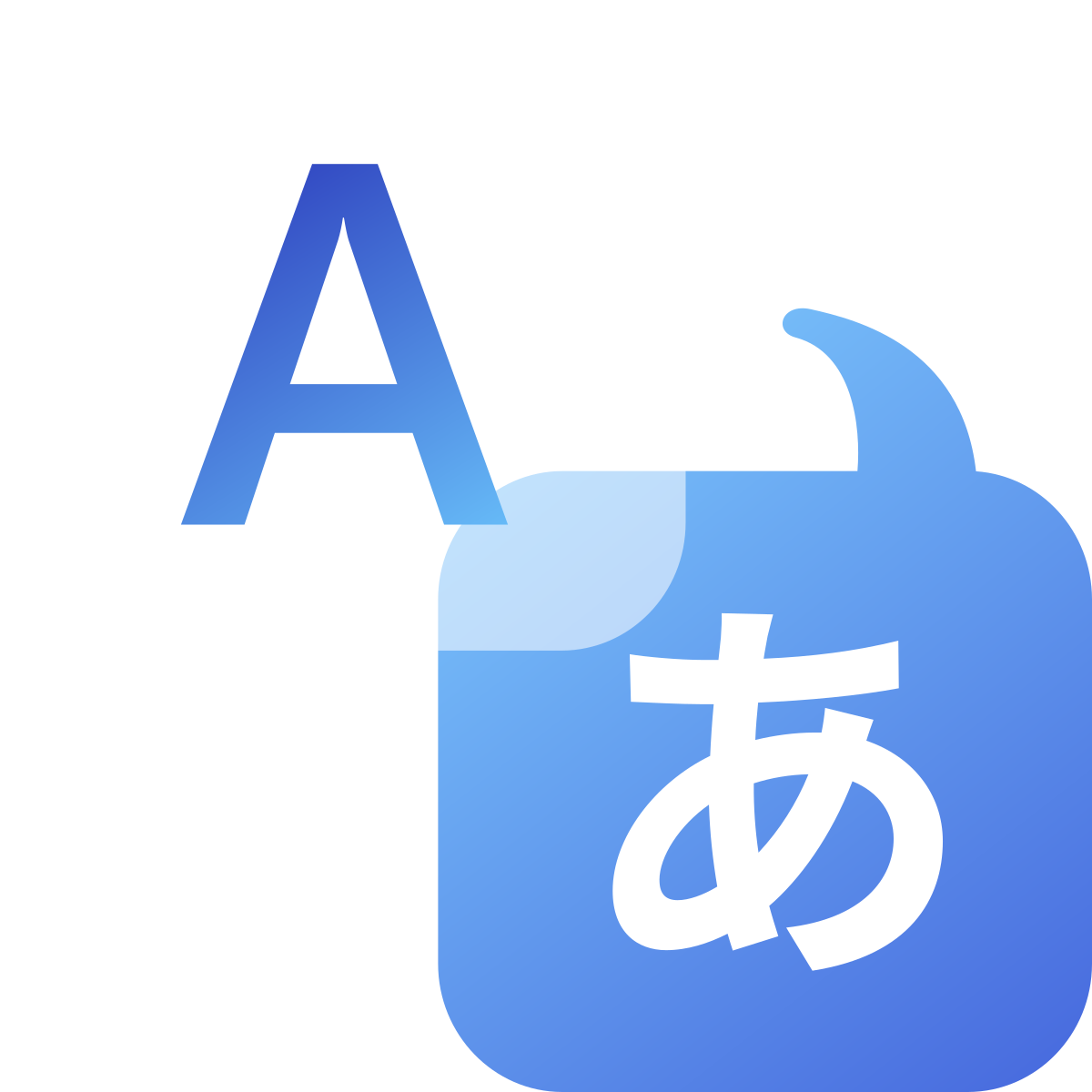
Bing Translator
Bing Translator offers a simple yet effective translation service suitable for everyday use and professional needs.

Smartling
Smartling is a translation management system designed for enterprises looking to streamline their localization efforts.

CopyAI
CopyAI utilizes cutting-edge AI to provide creative writing and translation solutions that cater to content creators.
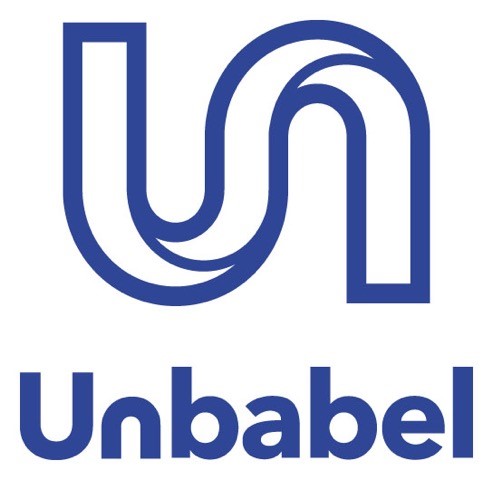
Unbabel
Unbabel combines AI with human expertise to deliver high-quality translations, making it ideal for customer service and support teams.
Google Translate
Google Translate is one of the most popular and accessible AI translation tools available, offering a broad range of language support and functionalities.

Features
- Supports over 100 languages.
- Real-time text, speech, and image translation.
- Offline mode for selected languages.
- Phrasebook to save frequently used translations.
- Integration with other Google services.
- Contextual translation improvements.
- API for developers to incorporate translation into apps.
- Instant camera translation for street signs and documents.
- Voice input and output for better communication.
- Text-to-speech for practicing pronunciation.
- Support typing, voice input, and handwriting, making it easy to translate characters and words not on regular keyboards.
- Basic translation available without internet access, ideal for travelers.
Pros and Cons
See Also: 9 Best AI Tools for Video Translation
DeepL
DeepL is well-known for its high-quality translations and its ability to understand context, making it popular with professionals.
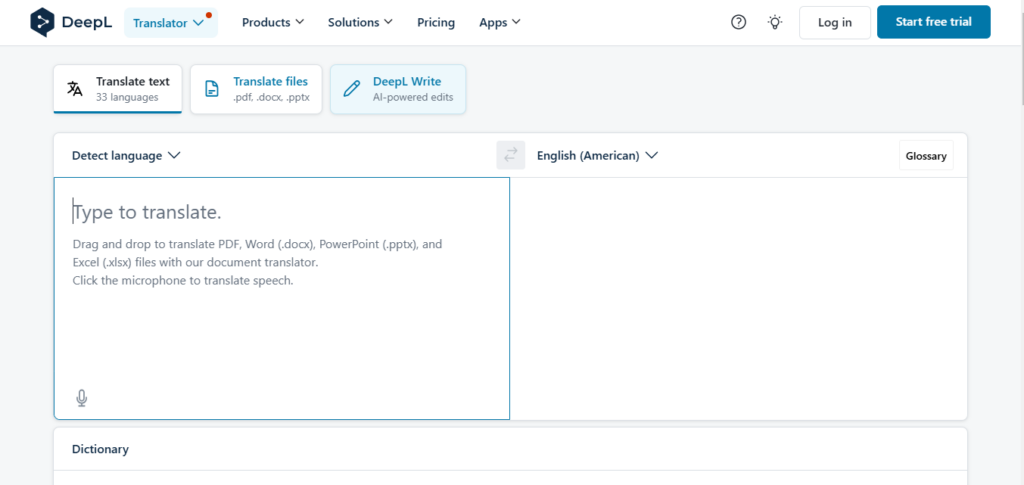
Features
- Enables developers to customize translation workflows across systems for high-quality, secure implementation.
- Offers clear API documentation, client libraries, and a developer community for easy setup and support.
- Boosts productivity by integrating with Microsoft 365, Google Workspace, and providing browser extensions for web translation and writing help.
- Advanced neural network translation technology.
- Ability to adjust tone and formality.
- Glossary feature to save preferred translations.
- Browser extensions for Chrome and Firefox.
- Desktop applications for Mac and Windows.
- Batch file translation capabilities.
- Supports multiple file formats.
- Regular updates and enhancements.
- Choose between formal and informal tones.
Pros and Cons
Amazon Translate
Amazon Translate offers a robust translation platform that’s ideal for businesses looking to integrate translation into their services.
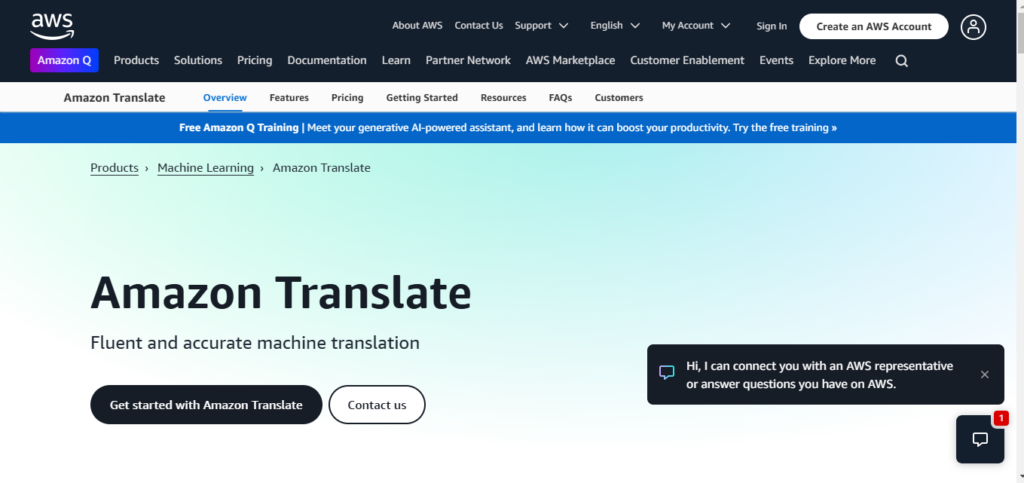
Features
- Real-time and batch translation options.
- Custom terminology for brand consistency.
- Translation memory to improve efficiency.
- Neural machine translation for high accuracy.
- Scalable to handle large volumes.
- Comprehensive security and compliance measures.
- Flexible pricing based on usage.
- Allows users to upload their own data to tailor machine translation results to their specific needs.
- Detects the source language automatically, ideal for user-generated content like reviews and social media posts.
- Provides real-time translation for text, HTML, and Docx files; users submit documents through AWS Console, CLI, or SDK API and receive translated versions with original formatting kept intact.
- Supports batch processing of translatable content in apps with a single API call.
- Customize machine-translated output to match your brand voice.
- Uses Natural Language Processing (NLP) to analyze multilingual texts and gauge sentiments about your brand.
- Processes large volumes of content with a single API.
- Fine-tune translations for brand voices and industry terms.
- Instant translation for chat, email, and ticketing systems.
Pros and Cons
See Also: 8 Best AI Tools for Transcription Services
Microsoft Translator
Microsoft Translator provides powerful tools for individuals and businesses, featuring a wide array of translation services.
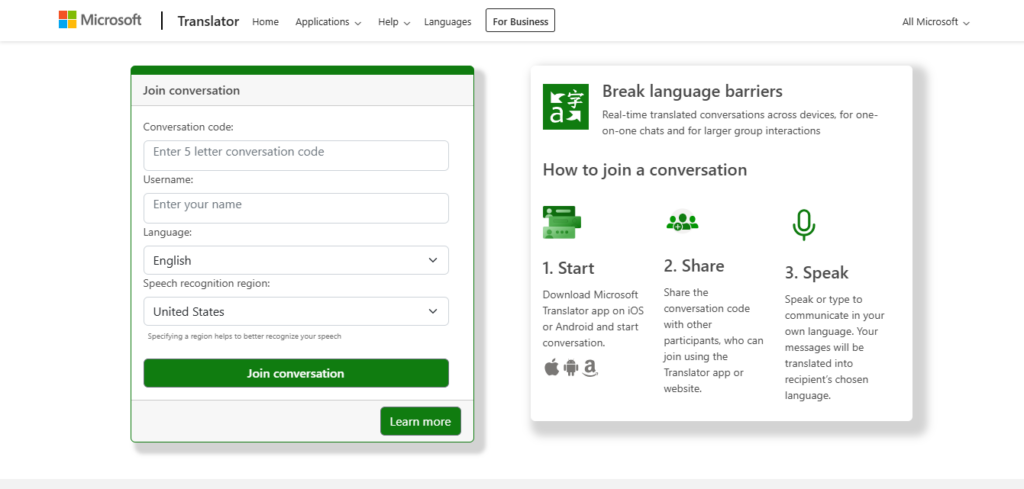
Features
- Translates text, speech, and conversations.
- Integration with Microsoft Office and Teams.
- Image translation capability.
- Multi-device conversation translation.
- AI-powered translation with continuous learning.
- Works on various devices and integrates with Microsoft products.
- Users can create personalized translation systems.
- Enables real-time spoken conversation translations.
- API for developers.
- Offline translation packs.
- Comprehensive language dictionary.
- Secure data processing.
Pros and Cons
See Also: Benefits of AI Translation Tools to Break Language Barriers
Bing Translator
Bing Translator offers a simple yet effective translation service suitable for everyday use and professional needs.
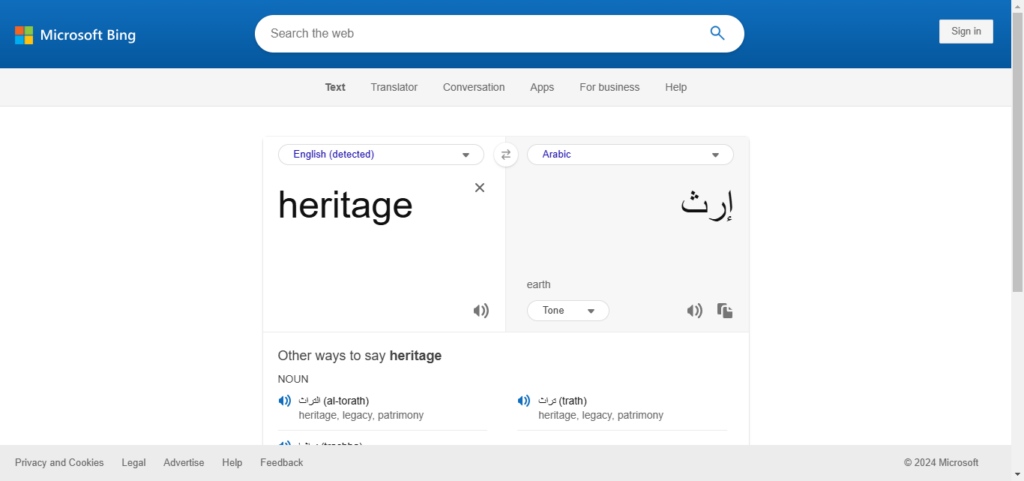
Features
- Supports 70+ languages.
- Text and speech translation.
- Voice recognition for accurate input.
- Web page translation.
- Mobile app for on-the-go translation.
- TTS (text-to-speech) functionality.
- User-contributed suggestions for improvement.
- Integration with Bing services.
- Simple and intuitive interface.
- Free to use with no registration required.
Pros and Cons
See Also: 11 Best AI Tools For Music Generators
Smartling
Smartling is a comprehensive translation management system designed for enterprises looking to streamline their localization efforts.
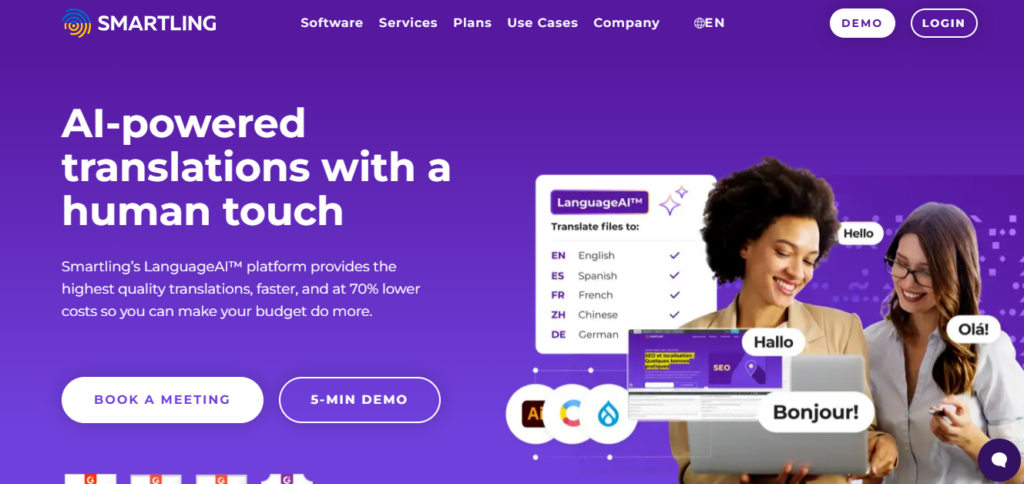
Features
- Supports multiple languages for global reach.
- Boost search visibility across languages with local keyword research, translation, content audits, and SEO copywriting.
- Use a custom error catalog to evaluate and refine translation quality.
- Offer video translation services: transcription, subtitles, voiceover, and dubbing.
- Cloud-based platform for real-time collaboration.
- Integration with content management systems.
- AI-powered translations with human review.
- Custom workflows for efficiency.
- Visual context editor.
- Comprehensive reporting and analytics.
- Quality assurance checks.
- API access for seamless integration.
- Data-driven insights for strategy improvement.
- Combines LLMs, machine translation, and human linguists for high-quality results.
- Offers various features and tracks performance.
- Access multiple machine translation engines.
- Features a GPT-enabled self-service portal for instant translations.
- Includes visual context, real-time translation memory, automated routing, and quality checks.
Pros and Cons
CopyAI
CopyAI utilizes cutting-edge AI to provide creative writing and translation solutions that cater to content creators.
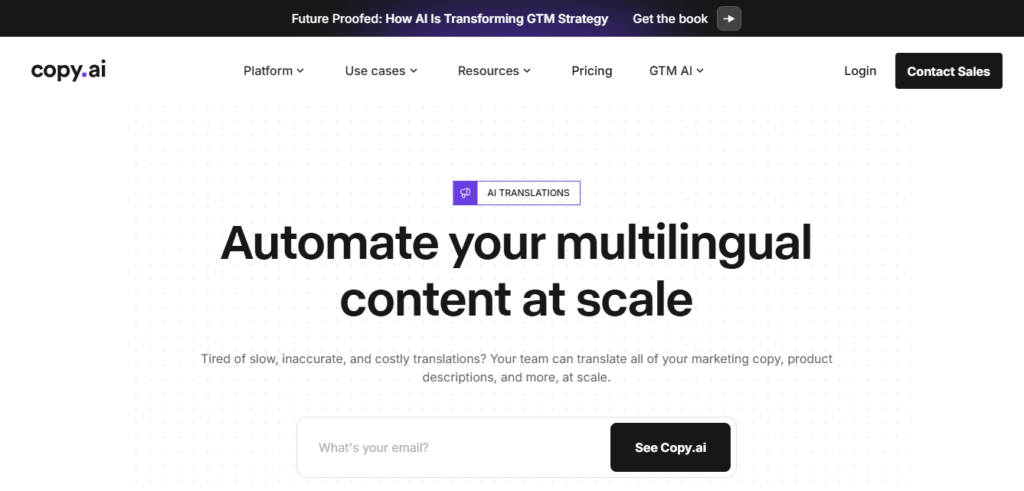
Features
- AI-driven content generation.
- Supports multiple languages.
- Templates for various content types.
- Customizable writing tones.
- Idea generation for creative projects.
- Easy-to-use interface.
- Integration with social media platforms.
- Content editing and rewriting tools.
- Suggestion engine for synonym and phrasing.
- Real-time collaboration features.
Pros and Cons
Unbabel
Unbabel combines AI with human expertise to deliver high-quality translations, making it ideal for customer service and support teams.
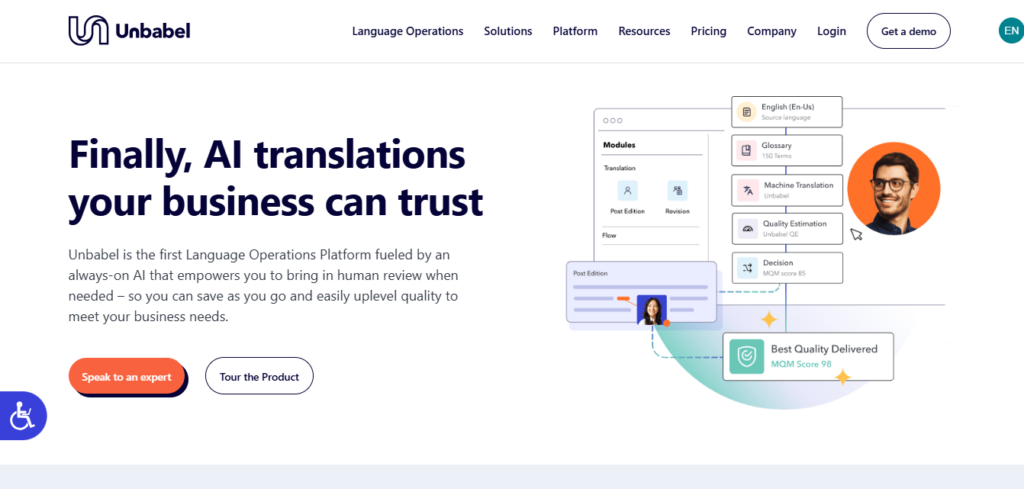
Features
- AI-driven translation with human editors.
- Supports email, chat, and support desk translations.
- Enables translation for websites, email, press releases, product descriptions, social media, e-commerce, marketing materials, and blogs.
- Partners with outsourcing providers for scalable, high-quality multilingual support.Integrates smoothly with workflows on platforms like Zendesk, Salesforce, and Intercom.
- Integration with CRM and support platforms.
- Quality assurance with human oversight.
- Scalable to meet business demands.
- Fast turnaround times.
- Multilingual customer support capabilities.
- Custom terminology and glossaries.
- Secure and compliant data handling.
- Dashboard for tracking and analytics.
Pros and Cons
See Also: 10 Best AI Tools For Voice Changer
Conclusion
AI translation tools are an indispensable asset for digital marketers, content creators, and language learners. By selecting the right tool, you can ensure seamless communication, enhance your global reach, and enrich your language skills. Each tool discussed here offers unique features and benefits, catering to various needs and preferences. Explore these options and choose the one that aligns best with your objectives.
FAQs
What is the most accurate AI translation tool?
DeepL is often praised for its high accuracy and nuanced translations, especially for European languages.
Are AI translation tools free?
Many offer free versions with basic features, but advanced capabilities often require a subscription or payment.
What is the primary benefit of using AI translation tools for businesses?
AI translation tools offer businesses numerous benefits, including cost savings, improved efficiency, and enhanced accuracy in translations. These tools allow companies to communicate effectively across different languages, enabling them to reach wider audiences and enter new markets with ease.
How do AI translation tools ensure accurate translations?
AI translation tools leverage advanced technologies such as neural machine translation and contextual understanding to provide high-quality translations. These technologies analyze sentences holistically, ensuring that the translations flow naturally and convey the intended meanings accurately.
Can AI translation tools be integrated with existing business processes?
Yes, many AI translation tools offer integration capabilities, allowing businesses to seamlessly incorporate translation services into their existing applications and workflows. This streamlines processes and enhances efficiency, supporting multilingual communication across various platforms.
Are there customization options available with AI translation tools?
Many AI translation tools provide a range of customization options, including support for custom terminology and domain-specific models. This ensures that translations are tailored to align with a business’s unique requirements, enhancing accuracy and relevance.
Q: Is data security a concern when using AI translation tools?
A: Data security is a significant consideration, and many AI translation tools focus on protecting sensitive information. Tools like SYSTRAN Translate comply with industry standards and regulations to safeguard user data, making them suitable for businesses operating in regulated industries.

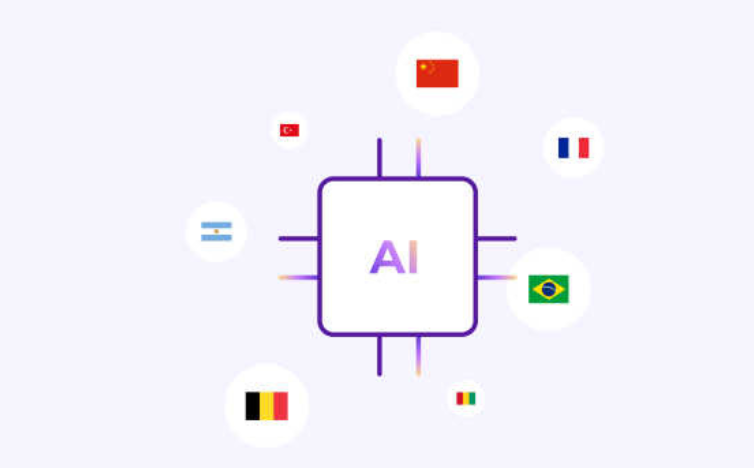

![Read more about the article 11 Best AI Tools For Music Generators [2025]](https://techvibe.ai/wp-content/uploads/2024/02/best-ai-music-generators-300x186.png)
